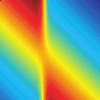Free Online Productivity Tools
i2Speak
i2Symbol
i2OCR
iTex2Img
iWeb2Print
iWeb2Shot
i2Type
iPdf2Split
iPdf2Merge
i2Bopomofo
i2Arabic
i2Style
i2Image
i2PDF
iLatex2Rtf
Sci2ools
CVPR
2004
IEEE
2004
IEEE
Invariant Operators, Small Samples, and the Bias-Variance Dilemma
Invariant features or operators are often used to shield the recognition process from the effect of "nuisance" parameters, such as rotations, foreshortening, or illumination changes. From an information-theoretic point of view, imposing invariance results in reduced (rather than improved) system performance. In fact, in the case of small training samples, the situation is reversed, and invariant operators may reduce the misclassification rate. We propose an analysis of this interesting behavior based on the bias-variance dilemma, and present experimental results confirming our theoretical expectations. In addition, we introduce the concept of "randomized invariants" for training, which can be used to mitigate the effect of small sample size.
Computer Vision | CVPR 2004 | Information-theoretic Point | Invariant Features | Invariant Operators | Small Sample Size |
| Added | 12 Oct 2009 |
| Updated | 29 Oct 2009 |
| Type | Conference |
| Year | 2004 |
| Where | CVPR |
| Authors | Xiaojin Shi, Roberto Manduchi |
Comments (0)

